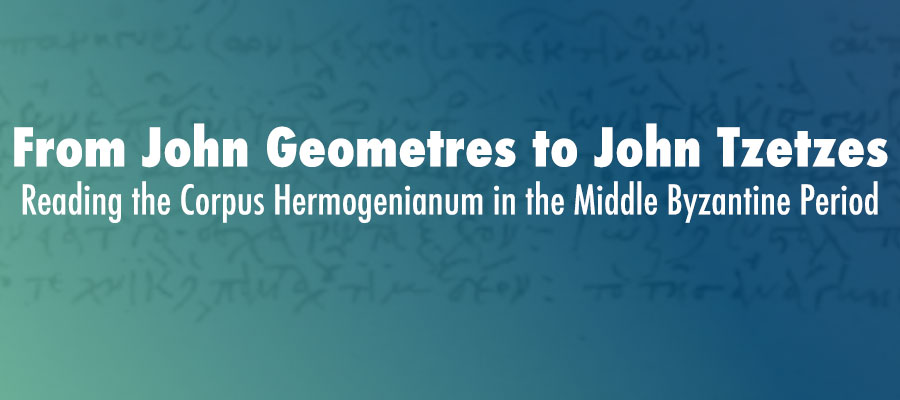Edited volume: From John Geometres to John Tzetzes: Reading the Corpus Hermogenianum in the Middle Byzantine Period
In the centuries after the end of the iconoclastic period (842), Byzantine culture shows a keen interest in rhetoric, testified by sustained engagement with the popular Corpus Hermogenianum. The corpus consolidated between the 5th and the 6thc. CE out of both authentic and spurious treatises (On the Issues, On the Types of Style, On Invention, On the Method of Forceful Speaking). It was transmitted together with the preparatory exercises (progymnasmata) by Aphthonios of Antioch (5th century). While Aristotelian rhetoric was disregarded until the 12th century, the corpus was a staple in the curriculum for any individual aspiring to a career in the imperial administration, the military, or the church. Between the 9th and the 13th century, every generation produced accessus (introductions) to Hermogenes and authoritative commentaries in competition with each other, which are nowadays unpublished or, at best, understudied.
This material offers precious insights into debates and theories on the value of rhetoric, showing links with the discursive practices of other fields of knowledge. Our understanding of the development of theories and concepts is still inherently wanting as we lack data on key texts and figures who, while being authoritative in their time, are little known to the modern reader. Moreover, while specific aspects or authorial exegeses such as John of Sardis’, John Sikeliotes’ and John Doxapatres’ have received more attention, no comprehensive effort has been made to look at the interconnectedness of the commentaries – both authorial and anonymous – produced from the middle Byzantine period onward. The task is not an easy one, texts are fluid and often difficult to date. And yet, while studying individual commentaries and prolegomena in isolation can be – and has proven – fruitful in many respects, it fails to capture the quintessential dialogic and entangled nature of these texts, in conversation both with the commented treatises and – sometimes even more vehemently – with each other as well as with contemporary society.
The planned edited volume, to be submitted to the Palgrave series New Approaches to Byzantine History and Culture aims to be a first step toward a more integrated understanding of the exegetical work done around the corpus Hermogenianum, with a focus on the period from the 10th to the 12th century.
Contributions of 8000-9000 words maximum including bibliography are welcomed. Possible topics include:
- Key figures such as John of Sardis, John Geometres, Gregory of Corinth and in particular John Sikeliotes and John Doxapatres
- Exegetical trends in both scholia and authorial commentaries
- Aspects of textual criticism and manuscript tradition
- Cultural variations across time in the approach to rhetoric and dialectic
- Rhetorical theory of the emotions
- The commentaries in the educational curriculum
- Classical tradition in the commentaries
Short abstracts are requested by September 15, 2022. Deadline for submission of the final paper is January 31, 2023.
Volume editors
Aglae Pizzone, University of Southern Denmark
Paolo Scattolin, University of Verona
